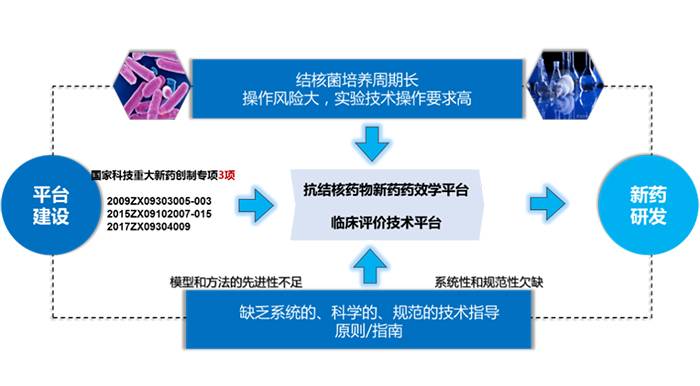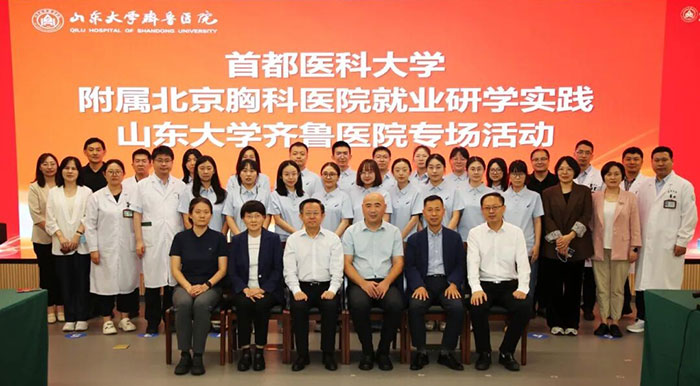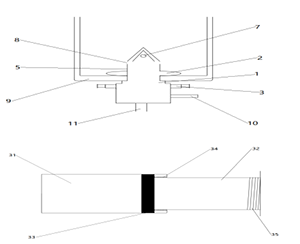2024年
No.10
PubMed
(tuberculosis[Title/Abstract]) OR (lung cancer[Title/Abstract])
Filters applied: from 2024/10/1 - 2024/10/31
1. Cell Host Microbe. 2024 Nov 13;32(11):1972-1987.e6. doi: 10.1016/j.chom.2024.10.004. Epub 2024 Oct 28.
Comprehensive analysis of Mycobacterium tuberculosis genomes reveals genetic variations in bacterial virulence.
Worakitchanon W(1), Yanai H(2), Piboonsiri P(3), Miyahara R(4), Nedsuwan S(5)
Tuberculosis, a disease caused by Mycobacterium tuberculosis (Mtb), is a significant health problem worldwide. Here, we developed a method to detect large insertions and deletions (indels), which have been generally understudied. Leveraging this framework, we performed a comprehensive analysis of single nucleotide variants and small and large indels across 1,960 Mtb clinical isolates. Comparing the distribution of variants demonstrated that gene disruptive variants are underrepresented in genes essential for bacterial survival. An evolutionary analysis revealed that Mtb genomes are enriched in partially deleterious mutations. Genome-wide association studies identified small and large deletions in eccB2 significantly associated with patient prognosis. Additionally, we unveil significant associations with antibiotic resistance in 23 non-canonical genes. Among these, large indels are primarily found in genetic regions of Rv1216c, Rv1217c, fadD11, and ctpD. This study provides a comprehensive catalog of genetic variations and highlights their potential impact for the future treatment and risk prediction of tuberculosis.
PMID: 39471821 [Indexed for MEDLINE]
2. Small. 2024 Oct;20(40): e2401334. doi: 10.1002/smll.202401334. Epub 2024 May 28.
Glutathione-responsive Aggregation-induced Emission Photosensitizers for Enhanced Photodynamic Therapy of Lung Cancer.
Sun F(1), Chen Y(1)(2), Lam KWK(1), Du W(1), Liu Q(3), Han F(2), Li D(2)
Lung cancer, a highly prevalent and lethal form of cancer, is often associated with oxidative stress. Photodynamic therapy (PDT) has emerged as a promising alternative therapeutic tool in cancer treatments, but its efficacy is closely correlated to the photosensitizers generating reactive oxygen species (ROS) and the antioxidant capacity of tumor cells. In particular, glutathione (GSH) can reduce the ROS and thus compromise PDT efficacy. In this study, a GSH-responsive near-infrared photosensitizer (TBPPN) based on aggregation-induced emission for real-time monitoring of GSH levels and enhanced PDT for lung cancer treatment is developed. The strategic design of TBPPN, consisting of a donor-acceptor structure and incorporation of dinitrobenzene, enables dual functionality by not only the fluorescence being activated by GSH but also depleting GSH to enhance the cytotoxic effect of PDT. TBPPN demonstrates synergistic PDT efficacy in vitro against A549 lung cancer cells by specifically targeting different cellular compartments and depleting intracellular GSH. In vivo studies further confirm that TBPPN can effectively inhibit tumor growth in a mouse model with lung cancer, highlighting its potential as an integrated agent for the diagnosis and treatment of lung cancer. This approach enhances the effectiveness of PDT for lung cancer and deserves further exploration of its potential for clinical application.
PMID: 38804884 [Indexed for MEDLINE]
3. Lancet Glob Health. 2024 Oct;12(10): e1629-e1637. doi: 10.1016/S2214-109X(24)00284-5. Epub 2024 Aug 16.
Projected health and economic effects of a pan-tuberculosis treatment regimen: a modelling study.
Ryckman TS(1), McQuaid CF(2), Cohen T(3), Menzies NA(4), Kendall EA(5)
BACKGROUND: A pan-tuberculosis regimen that could be initiated without knowledge of drug susceptibility has been proposed as an objective of tuberculosis regimen development. We modelled the health and economic benefits of such a regimen and analysed which of its features contribute most to impact and savings.
METHODS: We constructed a mathematical model of tuberculosis treatment parameterised with data from the published literature specific to three countries with a high tuberculosis burden (India, the Philippines, and South Africa). Our model simulated cohorts of newly diagnosed tuberculosis patients, including drug susceptibility testing if performed, regimen assignment, discontinuation, adherence, costs, and resulting outcomes of durable cure (microbiological cure without relapse), need for retreatment, or death. We compared a pan-tuberculosis regimen meeting the WHO 2023 target regimen profile against the standard of care of separate rifampicin-susceptible and rifampicin-resistant regimens. We estimated incremental cures; averted deaths, secondary cases, and costs; and prices below which a pan-tuberculosis regimen would be cost saving. We also assessed scenarios intended to describe which mechanisms of benefit from a pan-tuberculosis regimen (including improved characteristics compared with the current rifampicin-susceptible and rifampicin-resistant regimens and improved regimen assignment and retention in care for patients with rifampicin-resistant tuberculosis) would be most impactful. Results are presented as a range of means across countries with the most extreme 95% uncertainty intervals (UIs) from the three UI ranges.
FINDINGS: Compared with the standard of care, a pan-tuberculosis regimen could increase the proportion of patients durably cured after an initial treatment attempt from 69-71% (95% UI 57-80) to 75-76% (68-83), preventing 30-32% of the deaths (20-43) and 17-20% of the transmission (9-29) that occur after initial tuberculosis diagnosis. Considering savings to the health system and patients during and after the initial treatment attempt, the regimen could reduce non-drug costs by 32-42% (22-49) and would be cost saving at prices below US$170-340 (130-510). A rifamycin-containing regimen that otherwise met pan-tuberculosis targets yielded only slightly less impact, indicating that most of the benefits from a pan-tuberculosis regimen resulted from its improvements upon the rifampicin-susceptible standard of care. Eliminating non-adherence and treatment discontinuation, for example via a long-acting injectable regimen, increased health impact and savings.
INTERPRETATION: In countries with a high tuberculosis burden, a shorter, highly efficacious, safe, and tolerable regimen to treat all tuberculosis could yield substantial health improvements and savings.
PMID: 39159654 [Indexed for MEDLINE]
4. Lancet Infect Dis. 2024 Oct;24(10):1162-1176. doi: 10.1016/S1473-3099(24)00263-9. Epub 2024 May 22.
Targeted next-generation sequencing to diagnose drug-resistant tuberculosis: a systematic review and meta-analysis.
Schwab TC(1), Perrig L(1), Göller PC(1), Guebely De la Hoz FF(1), Lahousse AP(1)
BACKGROUND: Targeted next-generation sequencing (NGS) can rapidly and simultaneously detect mutations associated with resistance to tuberculosis drugs across multiple gene targets. The use of targeted NGS to diagnose drug-resistant tuberculosis, as described in publicly available data, has not been comprehensively reviewed. We aimed to identify targeted NGS assays that diagnose drug-resistant tuberculosis, determine how widely this technology has been used, and assess the diagnostic accuracy of these assays.
METHODS: In this systematic review and meta-analysis, we searched MEDLINE, Embase, Cochrane Library, Web of Science Core Collection, Global Index Medicus, Google Scholar, ClinicalTrials.gov, and the WHO International Clinical Trials Registry Platform for published and unpublished reports on targeted NGS for drug-resistant tuberculosis from Jan 1, 2005, to Oct 14, 2022, with updates to our search in Embase and Google Scholar until Feb 13, 2024. Studies eligible for the systematic review described targeted NGS approaches to predict drug resistance in Mycobacterium tuberculosis infections using primary samples, reference strain collections, or cultured isolates from individuals with presumed or confirmed tuberculosis. Our search had no limitations on study type or language, although only reports in English, German, and French were screened for eligibility. For the meta-analysis, we included test accuracy studies that used any reference standard, and we assessed risk of bias using the Quality Assessment of Diagnostic Accuracy Studies-2 tool. The primary outcomes for the meta-analysis were sensitivity and specificity of targeted NGS to diagnose drug-resistant tuberculosis compared to phenotypic and genotypic drug susceptibility testing. We used a Bayesian bivariate model to generate summary receiver operating characteristic plots and diagnostic accuracy measures, overall and stratified by drug and sample type. This study is registered with PROSPERO, CRD42022368707.
FINDINGS: We identified and screened 2920 reports, of which 124 were eligible for our systematic review, including 37 review articles and 87 reports of studies collecting samples for targeted NGS. Sequencing was mainly done in the USA (14 [16%] of 87), western Europe (ten [11%]), India (ten [11%]), and China (nine [10%]). We included 24 test accuracy studies in the meta-analysis, in which 23 different tuberculosis drugs or drug groups were assessed, covering first-line drugs, injectable drugs, and fluoroquinolones and predominantly comparing targeted NGS with phenotypic drug susceptibility testing. The combined sensitivity of targeted NGS across all drugs was 94·1% (95% credible interval [CrI] 90·9-96·3) and specificity was 98·1% (97·0-98·9). Sensitivity for individual drugs ranged from 76·5% (52·5-92·3) for capreomycin to 99·1% (98·3-99·7) for rifampicin; specificity ranged from 93·1% (88·0-96·3) for ethambutol to 99·4% (98·3-99·8) for amikacin. Diagnostic accuracy was similar for primary clinical samples and culture isolates overall and for rifampicin, isoniazid, ethambutol, streptomycin, and fluoroquinolones, and similar after excluding studies at high risk of bias (overall sensitivity 95·2% [95% CrI 91·7-97·1] and specificity 98·6% [97·4-99·3]).
INTERPRETATION: Targeted NGS is highly sensitive and specific for detecting drug resistance across panels of tuberculosis drugs and can be performed directly on clinical samples. There is a paucity of data on performance for some currently recommended drugs. The barriers preventing the use of targeted NGS to diagnose drug-resistant tuberculosis in high-burden countries need to be addressed.
FUNDING: National Institutes of Allergy and Infectious Diseases and Swiss National Science Foundation.
PMID: 38795712 [Indexed for MEDLINE]
5. Ann Oncol. 2024 Oct 14:S0923-7534(24)04055-9. doi: 10.1016/j.annonc.2024.10.006. Online ahead of print.
Lung Cancer Research and Treatment: Global Perspectives and Strategic Calls to Action.
Meyer ML(1), Peters S(2), Mok TS(3), Lam S(4), Yang PC(5), Aggarwal C(6)
BACKGROUND: Lung cancer remains a critical public health issue, presenting multifaceted challenges in prevention, diagnosis, and treatment. This article aims to review the current landscape of lung cancer research and management, delineate the persistent challenges, and outline pragmatic solutions.
MATERIALS AND METHODS: Global experts from academia, regulatory agencies such as the Food and Drug Administration (FDA) and the European Medicines Agency (EMA), the National Cancer Institute (NCI), professional societies, the pharmaceutical and biotech industries, and patient advocacy groups were gathered by the New York Lung Cancer Foundation to review the state of the art in lung cancer and to formulate calls to action.
RESULTS: Improving lung cancer management and research involves promoting tobacco cessation, identifying individuals at risk who could benefit from early detection programs, and addressing treatment-related toxicities. Efforts should focus on conducting well-designed trials to determine the optimal treatment sequence. Research into innovative biomarkers and therapies is crucial for more personalized treatment. Ensuring access to appropriate care for all patients, whether enrolled in clinical trials or not, must remain a priority.
CONCLUSIONS: Lung cancer is a major health burden worldwide, and its treatment has become increasingly complex over the past two decades. Improvement in lung cancer management and research requires unified messaging and global collaboration, expanded education, and greater access to screening, biomarker testing, treatment, as well as increased representativeness, participation, and diversity in clinical trials.
PMID: 39413875
6. J Thorac Oncol. 2024 Oct;19(10):1415-1426. doi: 10.1016/j.jtho.2024.07.014. Epub 2024 Jul 24.
Second Primary Lung Cancer - An Emerging Issue in Lung Cancer Survivors.
Jensen SØ(1), Moore DA(2), Surani AA(1), Crosbie PAJ(3), Rosenfeld N(4), Rintoul RC(5)
As a result of an increased focus on early detection including lung cancer screening, combined with more curative treatment options, the 5-year survival rates for lung cancer are improving. Welcome though this is, it brings new, hitherto unseen challenges. As more patients are cured and survive longer, they are at risk of developing second primary cancers, particularly lung cancer. In this review, we examine the challenges that surveillance, diagnosis, and management of second primary lung cancer (SPLC) bring and how these can be addressed. Recent data from prospective follow-up studies suggests that the incidence of SPLC may be higher than previously appreciated, partly due to an increase in multi-focal adenocarcinoma spectrum disease. Over 5 years, up to 1 in 6 long-term lung cancer survivors may develop a SPLC. Although not routinely used in clinical practice at present, genomic approaches for differentiating SPLC from intrapulmonary metastases of the first primary are emerging, and we highlight how this could be used to help differentiate lesions. An accurate distinction between SPLC and the recurrence of the first primary is of paramount importance due to the very different management strategies that may be required. Wrongly classifying an SPLC as a recurrence of the first primary may have significant consequences for patient management and overall survival. Updated approaches to the classification of SPLC combining clinical history, histopathological assessment, and genomic profiling are needed. Finally, we review the potential role of early detection biomarkers in the identification of SPLC, focusing in particular on blood-based biomarkers that are being examined in a multi-center prospective study recruiting lung cancer survivors.
PMID: 39059487 [Indexed for MEDLINE]
7. Nat Commun. 2024 Oct 4;15(1):8629. doi: 10.1038/s41467-024-52129-4.
Multi-ancestry GWAS meta-analyses of lung cancer reveal susceptibility loci and elucidate smoking-independent genetic risk.
Gorman BR(1)(2), Ji SG(1)(3), Francis M(1)(2), Sendamarai AK(1)(4), Shi Y(1)
Lung cancer remains the leading cause of cancer mortality, despite declining smoking rates. Previous lung cancer GWAS have identified numerous loci, but separating the genetic risks of lung cancer and smoking behavioral susceptibility remains challenging. Here, we perform multi-ancestry GWAS meta-analyses of lung cancer using the Million Veteran Program cohort (approximately 95% male cases) and a previous study of European-ancestry individuals, jointly comprising 42,102 cases and 181,270 controls, followed by replication in an independent cohort of 19,404 cases and 17,378 controls. We then carry out conditional meta-analyses on cigarettes per day and identify two novel, replicated loci, including the 19p13.11 pleiotropic cancer locus in squamous cell lung carcinoma. Overall, we report twelve novel risk loci for overall lung cancer, lung adenocarcinoma, and squamous cell lung carcinoma, nine of which are externally replicated. Finally, we perform PheWAS on polygenic risk scores for lung cancer, with and without conditioning on smoking. The unconditioned lung cancer polygenic risk score is associated with smoking status in controls, illustrating a reduced predictive utility in non-smokers. Additionally, our polygenic risk score demonstrates smoking-independent pleiotropy of lung cancer risk across neoplasms and metabolic traits.
PMID: 39366959 [Indexed for MEDLINE]
8. J Adv Res. 2024 Oct 12:S2090-1232(24)00462-4. doi: 10.1016/j.jare.2024.10.008.
Online ahead of print.
Applications of single-cell analysis in immunotherapy for lung cancer: Current progress, new challenges and expectations.
Xiao N(1), Liu H(2), Zhang C(1), Chen H(1), Li Y(1), Yang Y(1), Liu H(3), Wan J(4)
BACKGROUND: Lung cancer is a prevalent form of cancer worldwide, presenting a substantial risk to human well-being. Lung cancer is classified into two main types: non-small cell lung cancer (NSCLC) and small cell lung cancer (SCLC). The advancement of tumor immunotherapy, specifically immune checkpoint inhibitors and adaptive T-cell therapy, has encountered substantial obstacles due to the rapid progression of SCLC and the metastasis, recurrence, and drug resistance of NSCLC. These challenges are believed to stem from the tumor heterogeneity of lung cancer within the tumor microenvironment.
AIM OF REVIEW: This review aims to comprehensively explore recent strides in single-cell analysis, a robust sequencing technology, concerning its application in the realm of tumor immunotherapy for lung cancer. It has been effectively integrated with transcriptomics, epigenomics, genomics, and proteomics for various applications. Specifically, these techniques have proven valuable in mapping the transcriptional activity of tumor-infiltrating lymphocytes in patients with NSCLC, identifying circulating tumor cells, and elucidating the heterogeneity of the tumor microenvironment.
KEY SCIENTIFIC CONCEPTS OF REVIEW: The review emphasizes the paramount significance of single-cell analysis in mapping the immune cells within NSCLC patients, unveiling circulating tumor cells, and elucidating the tumor microenvironment heterogeneity. Notably, these advancements highlight the potential of single-cell analysis to revolutionize lung cancer immunotherapy by characterizing immune cell fates, improving therapeutic strategies, and identifying promising targets or prognostic biomarkers. It is potential to unravel the complexities within the tumor microenvironment and enhance treatment strategies marks a significant step towards more effective therapies and improved patient outcomes.
PMID: 39401694
9. Radiology. 2024 Oct;313(1):e240535. doi: 10.1148/radiol.240535.
Lung Nodule Management in Low-Dose CT Screening for Lung Cancer: Lessons from the NELSON Trial.
Zhong D(1), Sidorenkov G(1), Jacobs C(1), de Jong PA(1), Gietema HA(1)
Screening with low-dose CT (LDCT) in a high-risk population, as defined by age and smoking behavior, reduces lung cancer-related mortality. However, LDCT screening presents a major challenge. Numerous, mostly benign, nodules are seen in the lungs during screening. The question is how to distinguish the malignant from the benign nodules. Various studies use different protocols for nodule management. The Dutch Belgian NELSON (Nederlands-Leuvens Longkanker Screenings Onderzoek) trial, the largest European lung cancer screening trial, used distinctions based on nodule volumetric assessment and growth rate. This review discusses key findings from the NELSON study regarding the characteristics of screening-detected nodules, including nodule size and its volumetric assessment, growth rate, subtype, and their associated malignancy risk. These results are compared with findings from other screening studies and current recommendations for lung nodule management. By examining differences in nodule management strategies and providing a comprehensive overview of outcomes specific to lung cancer screening, this review aims to contribute to the broader discussion on optimizing lung nodule management in screening programs.
PMID: 39436294 [Indexed for MEDLINE]
10. Am J Respir Crit Care Med. 2024 Oct 15;210(8):979-993. doi: 10.1164/rccm.202402-0374SO.
Pathogenesis of Post-Tuberculosis Lung Disease: Defining Knowledge Gaps and Research Priorities at the Second International Post-Tuberculosis Symposium.
Auld SC(1), Barczak AK(2)(3)(4), Bishai W(5), Coussens AK(6)(7), Dewi IMW(8)(9)
Post-tuberculosis (post-TB) lung disease is increasingly recognized as a major contributor to the global burden of chronic lung disease, with recent estimates indicating that over half of TB survivors have impaired lung function after successful completion of TB treatment. However, the pathologic mechanisms that contribute to post-TB lung disease are not well understood, thus limiting the development of therapeutic interventions to improve long-term outcomes after TB. This report summarizes the work of the Pathogenesis and Risk Factors Committee for the Second International Post-Tuberculosis Symposium, which took place in Stellenbosch, South Africa, in April 2023. The committee first identified six areas with high translational potential: 1) tissue matrix destruction, including the role of matrix metalloproteinase dysregulation and neutrophil activity; 2) fibroblasts and profibrotic activity; 3) granuloma fate and cell death pathways; 4) mycobacterial factors, including pathogen burden; 5) animal models; and 6) the impact of key clinical risk factors, including HIV, diabetes, smoking, malnutrition, and alcohol. We share the key findings from a literature review of those areas, highlighting knowledge gaps and areas where further research is needed.
PMID: 39141569 [Indexed for MEDLINE]
11. ACS Nano. 2024 Oct 15;18(41):27905-27916. doi: 10.1021/acsnano.4c04680. Epub 2024 Oct 3.
AptBCis1, An Aptamer-Cisplatin Conjugate, Is Effective in Lung Cancer Leptomeningeal Carcinomatosis.
Huang BT(1), Lai WY(1)(2), Yeh CL(1), Tseng YT(1), Peck K(3), Yang PC(3)(4), Lin EP(1)(5)(2)
Treatment of lung cancer leptomeningeal carcinomatosis (LM) remains challenging partly due to the biological nature of the blood-brain barrier (BBB). Cisplatin has limited effects on LM, and it is notorious for neurotoxicity. Aptamers are small oligonucleotides considered as antibody surrogates. Here we report a DNA therapeutics, AptBCis1. AptBCis1 is a cisplatin-conjugated, BBB-penetrating, and cancer-targeting DNA aptamer. Its backbone, AptB1, was identified via in vivo SELEX using lung cancer LM orthotopic mouse models. The AptB1 binds to EAAT2, Nucleolin, and YB-1 proteins. Treatment with AptBCis1 1 mg/kg (equivalent to cisplatin 0.35 mg/kg) showed superior tumor suppressive effects compared to cisplatin 2 mg/kg in mice with lung cancer LM diseases. The cerebrospinal fluid platinum concentration in the AptBCis1 group was 10% of that in the cisplatin group. The data suggested the translational potential of AptBCis1 in lung cancer with LM and in cancers in which platinum-based chemotherapy remains as the standard of care.
PMID: 39360769 [Indexed for MEDLINE]
12. Nat Commun. 2024 Oct 2;15(1):8522. doi: 10.1038/s41467-024-52846-w.
The frequency of CD38(+) alveolar macrophages correlates with early control of M. tuberculosis in the murine lung.
Pisu D(1), Johnston L(1), Mattila JT(2), Russell DG(3)
Update of
Res Sq. 2024 Jul 15:rs.3.rs-3934768. doi: 10.21203/rs.3.rs-3934768/v1.
Tuberculosis, caused by Mycobacterium tuberculosis, remains an enduring global health challenge due to the limited efficacy of existing treatments. Although much research has focused on immune failure, the role of host macrophage biology in controlling the disease remains underappreciated. Here we show, through multi-modal single-cell RNA sequencing in a murine model, that different alveolar macrophage subsets play distinct roles in either advancing or controlling the disease. Initially, alveolar macrophages that are negative for the CD38 marker are the main infected population. As the infection progresses, CD38+ monocyte-derived and tissue-resident alveolar macrophages emerge as significant controllers of bacterial growth. These macrophages display a unique chromatin organization pre-infection, indicative of epigenetic priming for pro-inflammatory responses. Moreover, intranasal BCG immunization increases the numbers of CD38+ macrophages, enhancing their capability to restrict Mycobacterium tuberculosis growth. Our findings highlight the dynamic roles of alveolar macrophages in tuberculosis and open pathways for improved vaccines and therapies.
PMID: 39358361 [Indexed for MEDLINE]
13. Nat Cancer. 2024 Oct 15. doi: 10.1038/s43018-024-00840-y. Online ahead of print.
Developmental mosaicism underlying EGFR-mutant lung cancer presenting with multiple primary tumors.
Burr R(#)(1), Leshchiner I(#)(2)(3), Costantino CL(#)(1)(4), Blohmer M(5)(6)
Update of
medRxiv. 2023 Sep 29:2023.09.28.23296274. doi: 10.1101/2023.09.28.23296274.
Although the development of multiple primary tumors in smokers with lung cancer can be attributed to carcinogen-induced field cancerization, the occurrence of multiple tumors at presentation in individuals with EGFR-mutant lung cancer who lack known environmental exposures remains unexplained. In the present study, we identified ten patients with early stage, resectable, non-small cell lung cancer who presented with multiple, anatomically distinct, EGFR-mutant tumors. We analyzed the phylogenetic relationships among multiple tumors from each patient using whole-exome sequencing (WES) and hypermutable poly(guanine) (poly(G)) repeat genotyping as orthogonal methods for lineage tracing. In four patients, developmental mosaicism, assessed by WES and poly(G) lineage tracing, indicates a common non-germline cell of origin. In two other patients, we identified germline EGFR variants, which confer moderately enhanced signaling when modeled in vitro. Thus, in addition to germline variants, developmental mosaicism defines a distinct mechanism of genetic predisposition to multiple EGFR-mutant primary tumors, with implications for their etiology and clinical management.
PMID: 39406916
14. Cell Mol Immunol. 2024 Oct 22. doi: 10.1038/s41423-024-01230-1. Online ahead of print.
Kynurenine-AhR reduces T-cell infiltration and induces a delayed T-cell immune response by suppressing the STAT1-CXCL9/CXCL10 axis in tuberculosis.
Liu X(#)(1), Yang M(#)(1), Xu P(#)(2), Du M(2), Li S(1), Shi J(3), Li Q(3), Yuan J(4), Pang Y(5)
Tuberculosis, caused by Mycobacterium tuberculosis (Mtb), is a critical global health issue that is complicated by the ability of the pathogen to delay the host's T-cell immune response. This delay in T-cell recruitment to the site of infection is a pivotal survival strategy for Mtb, allowing it to establish a persistent chronic infection. To investigate the underlying mechanisms, this study focused on Mtb's exploitation of host tryptophan metabolism. Mtb upregulates indoleamine 2,3-dioxygenase 1 (IDO1) in inflammatory macrophages, thereby increasing kynurenine (Kyn) production. Kyn then activates the aryl hydrocarbon receptor (AhR), leading to the upregulation of suppressor of cytokine signaling 3 and subsequent inhibition of the JAK-STAT1 signaling pathway. This results in reduced secretion of the chemokines CXCL9 and CXCL10, which are crucial for T-cell recruitment to the lungs. Supported by in vivo mouse models, our findings reveal that disrupting this pathway through AhR knockout significantly enhances T-cell infiltration and activity, thereby undermining Mtb-induced immunosuppression. In contrast, additional Kyn injection obviously inhibited T-cell infiltration and activity. These results highlight potential therapeutic targets of AhR and IDO1, offering new avenues for enhancing the host immune response against tuberculosis and guiding future vaccine development efforts.
PMID: 39438693
15. Lancet Public Health. 2024 Nov;9(11):e841-e851. doi: 10.1016/S2468-2667(24)00192-0. Epub 2024 Oct 15.
Mass incarceration as a driver of the tuberculosis epidemic in Latin America and projected effects of policy alternatives: a mathematical modelling study.
Liu YE(1), Mabene Y(2), Camelo S(3), Rueda ZV(4), Pelissari DM(5)
Update of
medRxiv. 2024 Jul 22:2024.04.23.24306238. doi: 10.1101/2024.04.23.24306238.
BACKGROUND: Tuberculosis incidence is increasing in Latin America, where the incarcerated population has nearly quadrupled since 1990. We aimed to quantify the impact of historical and future incarceration policies on the tuberculosis epidemic, accounting for effects in and beyond prisons.
METHODS: In this modelling study, we calibrated dynamic compartmental transmission models to historical and contemporary data from Argentina, Brazil, Colombia, El Salvador, Mexico, and Peru, which comprise approximately 80% of the region's incarcerated population and tuberculosis burden. The model was fit independently for each country to incarceration and tuberculosis data from 1990 to 2023 (specific dates were country dependent). The model does not include HIV, drug resistance, gender or sex, or age structure. Using historical counterfactual scenarios, we estimated the transmission population attributable fraction (tPAF) for incarceration and the excess population-level burden attributable to increasing incarceration prevalence since 1990. We additionally projected the effect of alternative incarceration policies on future population tuberculosis incidence.
FINDINGS: Population tuberculosis incidence in 2019 was 29·4% (95% uncertainty interval [UI] 23·9-36·8) higher than expected without the rise in incarceration since 1990, corresponding to 34 393 (28 295-42 579) excess incident cases across countries. The incarceration tPAF in 2019 was 27·2% (20·9-35·8), exceeding estimates for other risk factors like HIV, alcohol use disorder, and undernutrition. Compared with a scenario where incarceration rates remain stable at current levels, a gradual 50% reduction in prison admissions and duration of incarceration by 2034 would reduce population tuberculosis incidence by over 10% in all countries except Mexico.
INTERPRETATION: The historical rise in incarceration in Latin America has resulted in a large excess tuberculosis burden that has been under-recognised to date. International health agencies, ministries of justice, and national tuberculosis programmes should collaborate to address this health crisis with comprehensive strategies, including decarceration.
PMID: 39419058 [Indexed for MEDLINE]
16. Lancet Glob Health. 2024 Oct;12(10):e1638-e1648. doi: 10.1016/S2214-109X(24)00259-6.
Assessing the effect of health system resources on HIV and tuberculosis programmes in Malawi: a modelling study.
Mangal TD(1), Mohan S(2), Colbourn T(3), Collins JH(3), Graham M(4), Jahn A(5)
BACKGROUND: Malawi is progressing towards UNAIDS and WHO End TB Strategy targets to eliminate HIV/AIDS and tuberculosis. We aimed to assess the prospective effect of achieving these goals on the health and health system of the country and the influence of consumable constraints.
METHODS: In this modelling study, we used the Thanzi la Onse (Health for All) model, which is an individual-based multi-disease simulation model that simulates HIV and tuberculosis transmission, alongside other diseases (eg, malaria, non-communicable diseases, and maternal diseases), and gates access to essential medicines according to empirical estimates of availability. The model integrates dynamic disease modelling with health system engagement behaviour, health system use, and capabilities (ie, personnel and consumables). We used 2018 data on the availability of HIV and tuberculosis consumables (for testing, treatment, and prevention) across all facility levels of the country to model three scenarios of HIV and tuberculosis programme scale-up from Jan 1, 2023, to Dec 31, 2033: a baseline scenario, when coverage remains static using existing consumable constraints; a constrained scenario, in which prioritised interventions are scaled up with fixed consumable constraints; and an unconstrained scenario, in which prioritised interventions are scaled up with maximum availability of all consumables related to HIV and tuberculosis care.
FINDINGS: With uninterrupted medical supplies, in Malawi, we projected HIV and tuberculosis incidence to decrease to 26 (95% uncertainty interval [UI] 19-35) cases and 55 (23-74) cases per 100 000 person-years by 2033 (from 152 [98-195] cases and 123 [99-160] cases per 100 000 person-years in 2023), respectively, with programme scale-up, averting a total of 12·21 million (95% UI 11·39-14·16) disability-adjusted life-years. However, the effect was compromised by restricted access to key medicines, resulting in approximately 58 700 additional deaths (33 400 [95% UI 22 000-41 000] due to AIDS and 25 300 [19 300-30 400] due to tuberculosis) compared with the unconstrained scenario. Between 2023 and 2033, eliminating HIV treatment stockouts could avert an estimated 12 100 deaths compared with the baseline scenario, and improved access to tuberculosis prevention medications could prevent 5600 deaths in addition to those achieved through programme scale-up alone. With programme scale-up under the constrained scenario, consumable stockouts are projected to require an estimated 14·3 million extra patient-facing hours between 2023 and 2033, mostly from clinical or nursing staff, compared with the unconstrained scenario. In 2033, with enhanced screening, 188 000 (81%) of 232 900 individuals projected to present with active tuberculosis could start tuberculosis treatment within 2 weeks of initial presentation if all required consumables were available, but only 8600 (57%) of 15 100 presenting under the baseline scenario.
INTERPRETATION: Ignoring frailties in the health-care system, in particular the potential non-availability of consumables, in projections of HIV and tuberculosis programme scale-up might risk overestimating potential health impacts and underestimating required health system resources. Simultaneous health system strengthening alongside programme scale-up is crucial, and should yield greater benefits to population health while mitigating the strain on a heavily constrained health-care system.
PMID: 39304236 [Indexed for MEDLINE]
17. Lancet Public Health. 2024 Oct;9(10):e745-e754. doi: 10.1016/S2468-2667(24)00185-3.
Estimated impact of a tobacco-elimination strategy on lung-cancer mortality in 185 countries: a population-based birth-cohort simulation study.
Rey Brandariz J(1), Rumgay H(2), Ayo-Yusuf O(3), Edwards R(4), Islami F(5)
BACKGROUND: The tobacco-free generation aims to prevent the sale of tobacco to people born after a specific year. We aimed to estimate the impact of eliminating tobacco smoking on lung-cancer mortality in people born during 2006-10 in 185 countries.
METHODS: For this population-based birth-cohort simulation study, we proposed a scenario in which tobacco sales were banned for people born between Jan 1, 2006, and Dec 31, 2010, and in which this intervention was perfectly enforced, quantified until Dec 31, 2095. To predict future lung-cancer mortality rates, we extracted lung-cancer mortality data by sex, 5-year age group, and 5-year calendar period for countries with at least 15 years of data from the WHO Mortality Database. For countries for which mortality data were not available, we extracted data on lung-cancer incidence from the Cancer Incidence in Five Continents. To establish the number of lung-cancer deaths that could be prevented in the birth cohort if tobacco smoking was eliminated, we subtracted reported age-specific rate of deaths in people who had never smoked tobacco (hereafter referred to as never smokers) from a previous study from the expected rate of lung-cancer deaths in our birth cohort and applied this difference to the size of the population. We computed population impact fractions (PIFs), the percentage of lung-cancer deaths that could be prevented, by dividing the number of preventable lung-cancer deaths by the expected lung-cancer deaths in the birth cohort. We also aggregated expected and prevented deaths into the four World Bank income groups (ie, high-income, upper-middle-income, lower-middle-income, and low-income). The primary outcome was the impact on lung-cancer mortality of implementing a tobacco-free generation.
FINDINGS: Our birth cohort included a total population of 650 525 800 people. Globally, we predicted that 2 951 400 lung-cancer deaths could occur in the population born during 2006-10 if lung-cancer rates continue to follow trends observed during the past 15 years. Of these deaths, 1 842 900 (62·4%) were predicted to occur in male individuals and 1 108 500 (37·6%) were expected to occur in female individuals. We estimated that 1 186 500 (40·2%) of 2 951 400 lung-cancer deaths in people born during 2006-10 could be prevented if tobacco elimination (ie, a tobacco-free generation) was achieved. We estimated that more lung-cancer deaths could be prevented in male individuals (844 200 [45·8%] of 1 842 900 deaths) than in female individuals (342 400 [30·9%] of 1 108 500 deaths). In male individuals, central and eastern Europe had the highest PIF (48 900 [74·3%] of 65 800 deaths) whereas in female individuals, western Europe had the highest PIF (56 200 [77·7%] of 72 300 deaths). Middle Africa was the region with the lowest PIF in both male individuals (180 [2·1%] of 8600 deaths) and female individuals (60 [0·9%] of 6400 deaths). In both sexes combined, PIF was 17 400 (13·5%) of 128 900 deaths in low-income countries, 104 900 (15·8%) of 662 800 deaths in lower-middle-income countries, 650 100 (43·9%) of 1 482 200 deaths in upper-middle-income countries, and 414 100 (61·1%) of 677 600 deaths in high-income countries.
INTERPRETATION: The implementation of a tobacco-free generation could substantially reduce global lung-cancer mortality. However, data from low-income countries were scarce and our estimates should be interpreted with caution.
PMID: 39366730 [Indexed for MEDLINE]
18. Lancet Infect Dis. 2024 Oct 29:S1473-3099(24)00586-3. doi: 10.1016/S1473-3099(24)00586-3. Online ahead of print.
Evaluating culture-free targeted next-generation sequencing for diagnosing drug-resistant tuberculosis: a multicentre clinical study of two end-to-end commercial workflows.
Colman RE(1), Seifert M(2), De la Rossa A(3), Georghiou SB(3), Hoogland C(3)
BACKGROUND: Drug-resistant tuberculosis remains a major obstacle in ending the global tuberculosis epidemic. Deployment of molecular tools for comprehensive drug resistance profiling is imperative for successful detection and characterisation of tuberculosis drug resistance. We aimed to assess the diagnostic accuracy of a new class of molecular diagnostics for drug-resistant tuberculosis.
METHODS: We conducted a prospective, cross-sectional, multicentre clinical evaluation of the performance of two targeted next-generation sequencing (tNGS) assays for drug-resistant tuberculosis at reference laboratories in three countries (Georgia, India, and South Africa) to assess diagnostic accuracy and index test failure rates. Eligible participants were aged 18 years or older, with molecularly confirmed pulmonary tuberculosis, and at risk for rifampicin-resistant tuberculosis. Sensitivity and specificity for both tNGS index tests (GenoScreen Deeplex Myc-TB and Oxford Nanopore Technologies [ONT] Tuberculosis Drug Resistance Test) were calculated for rifampicin, isoniazid, fluoroquinolones (moxifloxacin, levofloxacin), second line-injectables (amikacin, kanamycin, capreomycin), pyrazinamide, bedaquiline, linezolid, clofazimine, ethambutol, and streptomycin against a composite reference standard of phenotypic drug susceptibility testing and whole-genome sequencing.
FINDINGS: Between April 1, 2021, and June 30, 2022, 832 individuals were invited to participate in the study, of whom 720 were included in the final analysis (212, 376, and 132 participants in Georgia, India, and South Africa, respectively). Of 720 clinical sediment samples evaluated, 658 (91%) and 684 (95%) produced complete or partial results on the GenoScreen and ONT tNGS workflows, respectively, with 593 (96%) and 603 (98%) of 616 smear-positive samples producing tNGS sequence data. Both workflows had sensitivities and specificities of more than 95% for rifampicin and isoniazid, and high accuracy for fluoroquinolones (sensitivity approximately ≥94%) and second line-injectables (sensitivity 80%) compared with the composite reference standard. Importantly, these assays also detected mutations associated with resistance to critical new and repurposed drugs (bedaquiline, linezolid) not currently detectable by any other WHO-recommended rapid diagnostics on the market. We note that the current format of assays have low sensitivity (≤50%) for linezolid and more work on mutations associated with drug resistance is needed.
INTERPRETATION: This multicentre evaluation demonstrates that culture-free tNGS can provide accurate sequencing results for detection and characterisation of drug resistance from Mycobacterium tuberculosis clinical sediment samples for timely, comprehensive profiling of drug-resistant tuberculosis.
PMID: 39486428
19. Adv Sci (Weinh). 2024 Oct 1:e2402580. doi: 10.1002/advs.202402580. Online ahead of print.
Unveiling Cas12j Trans-Cleavage Activity for CRISPR Diagnostics: Application to miRNA Detection in Lung Cancer Diagnosis.
Kang JE(1)(2), Kim H(3), Lee YH(1)(2), Lee HY(1), Park Y(3), Jang H(3)
Cas12j, a hypercompact and efficient Cas protein, has potential for use in CRISPR diagnostics, but has not yet been used because the trans-cleavage activity of Cas12j is veiled. Here, the trans-cleavage behavior of Cas12j1, 2, and 3 variants and evaluate their suitability for nucleic acid detection is unveiled. The target preferences and mismatch specificities of the Cas12j variants are precisely investigated and the optimal Cas12j reaction conditions are determined. As a result, the EXP-J assay for miRNA detection by harnessing the robust trans-cleavage activity of Cas12j on short ssDNA is developed. The EXP-J method demonstrates exceptional detection capabilities for miRNAs, proving that Cas12j can be a pivotal component in molecular diagnostics. Furthermore, the translational potential of the EXP-J assay is validated by detecting oncogenic miRNAs in plasma samples from lung cancer patients. This investigation not only elucidates the trans-cleavage characteristics of Cas12j variants, but also advances the Cas12j-based diagnostic toolkit.
PMID: 39354694
20. ACS Nano. 2024 Oct 22;18(42):29223-29232. doi: 10.1021/acsnano.4c11548. Epub 2024 Oct 11.
Fibroblast Growth Factor Receptor 1-Specific Dehydrogelation to Release Its Inhibitor for Enhanced Lung Tumor Therapy.
Tang R(1), Zhang Z(1), Liu X(1), Zhu L(1), Xu Y(2), Chai R(3), Zhan W(1), Shen S(2), Liang G(1)
Fibroblast growth factor receptor 1 (FGFR1) is emerging as a promising molecular target of lung cancer, and various FGFR1 inhibitors have exhibited significant therapeutic effects on lung cancer in preclinical research. Due to their low targeting ability or bioavailability, direct administration of these inhibitors may cause side effects. Herein, a hydrogelator, Nap-Phe-Phe-Phe-Glu-Thr-Glu-Leu-Tyr-OH (Nap-Y), was rationally designed to coassemble with an FGFR1 inhibitor nintedanib (Nin) to form a peptide hydrogel Gel Y/Nin for localized administration and FGFR1-triggered release of Nin. Upon specific phosphorylation by FGFR1 overexpressed on lung cancer cells, Nap-Y in Gel Y/Nin is converted to the hydrophilic product Nap-Phe-Phe-Phe-Glu-Thr-Glu-Leu-Tyr(H2PO3)-OH (Nap-Yp), leading to dehydrogelation of the gel and subsequent Nin release. In vitro experiments demonstrate that the release of Nin in a sustained manner from Gel Y/Nin significantly suppresses the survival, migration, and invasion of A549 cells by inhibiting FGFR1 expression and its phosphorylation function on downstream signaling molecules. Nude mouse studies show that Gel Y/Nin exhibits enhanced therapeutic efficacy on lung tumor than free Nin. We anticipate that Gel Y/Nin will be utilized for lung cancer treatment in clinical settings in the near future.
PMID: 39392940 [Indexed for MEDLINE]
21. J Clin Oncol. 2024 Oct 20;42(30):3570-3580. doi: 10.1200/JCO.24.00048. Epub 2024 Aug 1.
Randomized Controlled Trial of a Nurse-Led Brief Behavioral Intervention for Dyspnea in Patients With Advanced Lung Cancer.
Greer JA(1)(2), Post KE(1)(2), Chabria R(1), Aribindi S(1), Brennan N(1), Eche-Ugwu IJ(2)(3)
PURPOSE: In patients with lung cancer, dyspnea is one of the most prevalent and disabling symptoms, for which effective treatments are lacking. We examined the efficacy of a nurse-led brief behavioral intervention to improve dyspnea in patients with advanced lung cancer.
METHODS: Patients with advanced lung cancer reporting at least moderate breathlessness (n = 247) were enrolled in a randomized trial of a nurse-led two-session intervention (focused on breathing techniques, postural positions, and fan therapy) versus usual care. At baseline and weeks 8 (primary end point), 16, and 24, participants completed measures of dyspnea (Modified Medical Research Council Dyspnea Scale [mMRCDS]; Cancer Dyspnoea Scale [CDS]), quality of life (Functional Assessment of Cancer Therapy-Lung [FACT-L]), psychological symptoms (Hospital Anxiety and Depression Scale), and activity level (Godin-Shephard Leisure Time Physical Activity Questionnaire). To examine intervention effects, we conducted analysis of covariance and longitudinal mixed effects models.
RESULTS: The sample (Agemean = 66.15 years; 55.9% female) primarily included patients with advanced non-small cell lung cancer (85.4%). Compared with usual care, the intervention improved the primary outcome of patient-reported dyspnea on the mMRCDS (difference = -0.33 [95% CI, -0.61 to 0.05]) but not the CDS total score at 8 weeks. Intervention patients also reported less dyspnea on the CDS sense of discomfort subscale (difference = -0.59 [95% CI, -1.16 to -0.01]) and better functional well-being per the FACT-L (difference = 1.39 [95% CI, 0.18 to 2.59]) versus the control group. Study groups did not differ in overall quality of life, psychological symptoms, or activity level at 8 weeks or longitudinally over 24 weeks.
CONCLUSION: For patients with advanced lung cancer, a scalable behavioral intervention alleviated the intractable symptom of dyspnea. Further research is needed on ways to enhance intervention effects over the long-term and across additional outcomes.
PMID: 39088766 [Indexed for MEDLINE]
22. Angew Chem Int Ed Engl. 2024 Oct 14:e202412994. doi: 10.1002/anie.202412994. Online ahead of print.
Arenicolide Family Macrolides Provide a New Therapeutic Lead Combating Multidrug-Resistant Tuberculosis.
Hwang S(1), Heo BE(2), Nguyen TQ(2), Kim YJ(3)(4), Lee SG(5), Huynh TH(1), Kim E(1), Jo SI(6)
The emergence of multidrug-resistant (MDR) and extensively drug-resistant (XDR) strains of Mycobacterium tuberculosis (Mtb) poses a significant threat to health globally. During searching for new chemical entities regulating MDR- and XDR-Mtb, chemical investigation of the black oil beetle gut bacterium Micromonospora sp. GR10 led to the discovery of eight new members of arenicolides along with the identification of arenicolide A (Ar-A, 1), which was a previously reported macrolide with incomplete configuration. Genomic analysis of the bacterial strain GR10 revealed their putative biosynthetic pathway. Quantum mechanics-based computation, chemical derivatizations, and bioinformatic analysis established the absolute stereochemistry of Ar-A and arenicolides D-K (Ar-D-K, 2-9) completely for the first time. Biological studies of 1-9 revealed their antimicrobial activity against MDR and XDR strains of Mtb. Ar-A had the most potent in vitro antimicrobial efficacy against MDR- and XDR-Mtb. Mechanistically, Ar-A induced ATP depletion and destabilized Mtb cell wall, thereby inhibiting growth. Notably, Ar-A exerted a significant antimicrobial effect against Mtb in macrophages, was effective in the treatment of Mtb infections, and showed a synergistic effect with amikacin (AMK) in a mouse model of MDR-Mtb lung infection. Collectively, our findings indicate Ar-A to be a promising drug lead for drug-resistant tuberculosis.
PMID: 39400949
23. Nat Commun. 2024 Oct 30;15(1):9400. doi: 10.1038/s41467-024-53273-7.
Risk-stratified treatment for drug-susceptible pulmonary tuberculosis.
Chang VK(1)(2), Imperial MZ(1)(2), Phillips PPJ(2)(3), Velásquez GE(2)(4), Nahid P(2)(3)
The Phase 3 randomized controlled trial, TBTC Study 31/ACTG A5349 (NCT02410772) demonstrated that a 4-month rifapentine-moxifloxacin regimen for drug-susceptible pulmonary tuberculosis was safe and effective. The primary efficacy outcome was 12-month tuberculosis disease free survival, while the primary safety outcome was the proportion of grade 3 or higher adverse events during the treatment period. We conducted an analysis of demographic, clinical, microbiologic, radiographic, and pharmacokinetic data and identified risk factors for unfavorable outcomes and adverse events. Among participants receiving the rifapentine-moxifloxacin regimen, low rifapentine exposure is the strongest driver of tuberculosis-related unfavorable outcomes (HR 0.65 for every 100 µg∙h/mL increase, 95%CI 0.54-0.77). The only other risk factors identified are markers of higher baseline disease severity, namely Xpert MTB/RIF cycle threshold and extent of disease on baseline chest radiography (Xpert: HR 1.43 for every 3-cycle-threshold decrease, 95%CI 1.07-1.91; extensive disease: HR 2.02, 95%CI 1.07-3.82). From these risk factors, we developed a simple risk stratification to classify disease phenotypes as easier-, moderately-harder, or harder-to-treat TB. Notably, high rifapentine exposures are not associated with any predefined adverse safety outcomes. Our results suggest that the easier-to-treat subgroup may be eligible for further treatment shortening while the harder-to-treat subgroup may need higher doses or longer treatment.
PMID: 39477924 [Indexed for MEDLINE]
24. Immunity. 2024 Oct 8;57(10):2380-2398.e6. doi: 10.1016/j.immuni.2024.08.002. Epub 2024 Aug 29.
CD4(+) T cells re-wire granuloma cellularity and regulatory networks to promote immunomodulation following Mtb reinfection.
Bromley JD(1), Ganchua SKC(2), Nyquist SK(3), Maiello P(4), Chao M(5), Borish HJ(2)
Immunological priming-in the context of either prior infection or vaccination-elicits protective responses against subsequent Mycobacterium tuberculosis (Mtb) infection. However, the changes that occur in the lung cellular milieu post-primary Mtb infection and their contributions to protection upon reinfection remain poorly understood. Using clinical and microbiological endpoints in a non-human primate reinfection model, we demonstrated that prior Mtb infection elicited a long-lasting protective response against subsequent Mtb exposure and was CD4+ T cell dependent. By analyzing data from primary infection, reinfection, and reinfection-CD4+ T cell-depleted granulomas, we found that the presence of CD4+ T cells during reinfection resulted in a less inflammatory lung milieu characterized by reprogrammed CD8+ T cells, reduced neutrophilia, and blunted type 1 immune signaling among myeloid cells. These results open avenues for developing vaccines and therapeutics that not only target lymphocytes but also modulate innate immune cells to limit tuberculosis (TB) disease.
PMID: 39214090 [Indexed for MEDLINE]
25. J Clin Oncol. 2024 Oct 10;42(29):3383-3386. doi: 10.1200/JCO.24.01147. Epub 2024 Sep 4.
New Benchmark for Targeted Therapies in Lung Cancer: Median Progression-Free Survival for Lorlatinib in Advanced ALK+ Non-Small Cell Lung Cancer Surpasses 5 years.
Lovly CM(1)
Comment on
J Clin Oncol. 2024 Oct 10;42(29):3400-3409. doi: 10.1200/JCO.24.00581.
In the article that accompanies this editorial, Dr. Solomon and colleagues present a post-hoc analysis of investigator-assessed efficacy outcomes, safety, and biomarker analyses encompassing approximately 5 years’ worth of data from the CROWN trial (NCT03052608) of lorlatinib compared with crizotinib in patients with treatment naïve advanced / metastatic ALK+ NSCLC demonstrating a PFS benefit for lorlatinib which exceeds 5 years and a 96% probability of preventing brain metastases within this time frame. These updated data are unprecedented for the treatment of ALK+ NSCLC, and for NSCLC treated with targeted therapies in general, making a compelling argument for lorlatinib as the preferred first line ALK TKI.
PMID: 39231392 [Indexed for MEDLINE]
26. Am J Respir Crit Care Med. 2024 Oct 1;210(7):908-918. doi: 10.1164/rccm.202306-1054OC.
Discovery of Two Novel Immunoepitopes and Development of a Peptide-based Sarcoidosis Immunoassay.
Peng C(1), Talreja J(1), Steinbauer B(1), Shinki K(2), Koth LL(3), Samavati L(1)(4).
Comment in
Am J Respir Crit Care Med. 2024 Oct 1;210(7):863-864. doi:
10.1164/rccm.202404-0750ED.
Rationale: Sarcoidosis is a systemic granulomatous disorder associated with hypergammaglobulinemia and the presence of autoantibodies. The specific antigens initiating granulomatous inflammation in sarcoidosis are unknown, and there is no specific test available to diagnose sarcoidosis. To discover novel sarcoidosis antigens, we developed a high-throughput T7 phage display library derived from the sarcoidosis cDNA and identified numerous clones differentiating sarcoidosis from other respiratory diseases. After clone sequencing and a homology search, we identified two epitopes (cofilin μ and chain A) that specifically bind to serum IgGs of patients with sarcoidosis. Objectives: To develop and validate an epitope-specific IgG-based immunoassay specific for sarcoidosis.
Methods: We chemically synthesized both immunoepitopes (cofilin μ and chain A) and generated rabbit polyclonal antibodies against both neoantigens. After extensive standardization, we developed a direct peptide ELISA and measured epitope-specific IgG in the sera of 386 subjects, including healthy control subjects (n = 100), three sarcoidosis cohorts (n = 186), pulmonary tuberculosis (n = 70), and lung cancer (n = 30).
Measurements and Main Results: To develop a model to classify sarcoidosis distinctly from other groups, data were analyzed using fivefold cross-validation when adjusting for confounders. The cofilin μ IgG model yielded a mean sensitivity, specificity, and positive and negative predictive value of 0.97, 0.9, 0.9, and 0.96, respectively. Those same measures for chain A IgG antibody were 0.9, 0.83, 0.84, and 0.9, respectively. Combining both biomarkers improved the area under the curve, sensitivity, specificity, and positive and negative predictive value.
Conclusions: These results provide a novel immunoassay for sarcoidosis. The discovery of two neoantigens facilitates the development of biospecific drug discovery and the sarcoidosis-specific model.
PMID: 38385694 [Indexed for MEDLINE]
27. Cancer Cell. 2024 Nov 11;42(11):1882-1897.e7. doi: 10.1016/j.ccell.2024.09.012. Epub 2024 Oct 17.
Overcoming tyrosine kinase inhibitor resistance in lung cancer brain metastasis with CTLA4 blockade.
Fu M(1), Zhao J(2), Zhang L(1), Sheng Z(1), Li X(2), Qiu F(1), Feng Y(1), You M(1), Xu H(1)
Lung cancer brain metastasis (LCBM) poses a significant clinical challenge due to acquired resistance to tyrosine kinase inhibitor (TKI) treatment. To elucidate its underlying mechanisms, we employed single-cell RNA sequencing analysis on surgically obtained LCBM samples with diverse genetic backgrounds and TKI treatment histories. Our study uncovers that TKI treatment elevates the immune checkpoint CTLA4 expression in T cells, promoting an immune-suppressive microenvironment. This immunomodulation is initiated by tumor-derived HMGB1 in response to TKIs. In LCBM syngeneic murine models with TKI-sensitive or TKI-resistant EGFR mutations, combining CTLA4 blockade with TKIs demonstrates enhanced efficacy over TKI monotherapy or TKIs with PD1 blockade. These findings provide insights into the TKI resistance mechanisms and highlight the potential of CTLA4 blockade in effectively overcoming TKI resistance in LCBM.
PMID: 39423817 [Indexed for MEDLINE]
28. J Thorac Oncol. 2024 Oct;19(10):1438-1448. doi: 10.1016/j.jtho.2024.06.004. Epub 2024 Jun 10.
Mutational Characteristics and Clinical Outcomes for Lung Adenocarcinoma With EGFR Germline Mutations.
Pan K(1), Owens J(2), Elamin Y(2), Lu C(2), Routbort M(3), Zhang J(2), Fossella F(2), Negrao MV(2)
INTRODUCTION: Germline mutations driving lung cancer have been infrequently reported in the literature, with EGFR T790M being a known germline mutation identified in 1% of NSCLCs. Typically, a somatic EGFR mutation is acquired to develop lung adenocarcinoma. Osimertinib has become a standard-of-care treatment for EGFR T790M-positive lung cancer.
METHODS: We perform a retrospective analysis through the Lung Cancer Moon Shot GEMINI database at the University of Texas MD Anderson Cancer Center. Of the patients that underwent cell-free DNA analysis, germline mutations were identified by those with high variant allelic fraction approximating 50%, followed by further confirmation on genetic testing.
RESULTS: We identified 22 patients with germline EGFR mutations, with the majority harboring an EGFR T790M mutation (95.5%) and an EGFR L858R somatic mutation (50%). Notably, most patients were female (86.4%), non-smokers (81.8%), white (86.4%), had a family history of lung cancer (59.1%), and stage IV at diagnosis (72.7%). A distinct radiographic pattern of small multifocal ground-glass pulmonary nodules was observed in the majority of our cohort (72.7%). Among the 18 with advanced-stage NSCLC, 12 patients (66.7%) were treated with first-line osimertinib, demonstrating a median progression-free survival (PFS) of 16.9 months (95% confidence interval [CI]: 6.3-not reached [NR]). Others were treated with first-line afatinib (11.1%) or chemotherapy (22.2%). Among the 17 patients treated with osimertinib (in first or second-line), median PFS was 20.4 months (95% CI: 6.3-NR) and median overall survival was 82.0 months (95% CI: 28.4-NR).
CONCLUSIONS: Based on our institutional cohort, NSCLC driven by EGFR germline mutations occurs more frequently in non-smoking, white females with multi-focal pulmonary nodules radiographically. Osimertinib for advanced germline EGFR-mutated NSCLC renders similar PFS compared to somatic T790M EGFR-mutated NSCLC.
PMID: 38866326 [Indexed for MEDLINE]









.jpg)
















